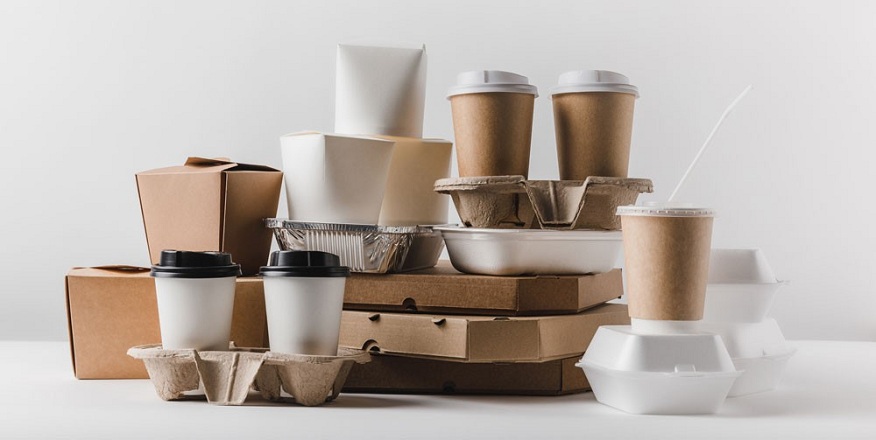Packaging is crucial in ensuring the quality and safety of food products from manufacturing to consumption. Food packaging protects foods from damage, illness, and spoilage by creating barriers between foods and a variety of environmental hazards. It examines the critical role that packaging plays in preserving food quality and extending shelf life.
Physical Damage Protection
The primary function of food packaging is to protect packed foods from physical damage during transportation and handling. Foods are susceptible to crushing, denting, puncturing, and other forms of physical maltreatment throughout distribution and sale. Cushioning and structure are provided by materials such as cardboard, plastic, and glass to prevent foods from being crushed or damaged. Cushioning packaging materials such as foam, paper, and biodegradable fillers absorb shocks and distribute impacts to keep items intact. Rigid containers and casings constructed of materials such as plastic and glass provide effective crushing resistance.
Contamination Avoidance
Food packaging establishes barriers that prevent contamination and keep packaged foods pure. Dirt, dust, microorganisms, chemicals, and other contaminants in the surrounding environment can all cause contamination. Food is sealed in airtight and moisture-proof packaging within protected conditions that are segregated from external contamination. To build efficient contamination barriers, multi-layer packaging mixes materials such as plastic, foil, and paper. Some packaging has extra features such as one-way valves that allow gasses to escape but prevent pollutants from re-entering. Tamper-evident seals and indications ensure that packaged foods have not been tampered with after leaving manufacturing facilities. Overall, packaging performs an important hygiene role in keeping meals contaminant-free.
Increasing Shelf Life
Food shelf life can be considerably enhanced by using proper packaging. Permeable packaging provides for optimal gas exchange to ensure freshness, but it also contributes to faster degradation over time. Packaging companies respond by inventing enhanced barrier materials and packaging formats that slow or block the transfer of oxygen, moisture, ethylene, and other factors that might cause food degradation. When employed singly or in multilayer packaging systems, materials such as plastic, foil, and coated paper provide effective barriers. Desiccants, oxygen absorbers, and other technologies are used in some packaging to actively manage the internal atmosphere and slow chemical changes in meals. Packaging with enhanced barrier qualities allows for extended transport and retail display durations while maintaining food quality and safety.
Sensory Attributes Preservation
Packaging plays a crucial role in keeping the sensory qualities that consumers expect, in addition to physically safeguarding foods and preventing rotting. It includes retaining characteristics such as appearance, texture, aroma, and flavor over the shelf life. Light-blocking packaging protects items that are susceptible to light degradation, such as fruits and vegetables. Gas-permeable sheets and trays enable excellent gas exchange, preserving crispness, freshness, and natural attributes. Controlled/modified atmosphere packaging (CAP/MAP) and vacuum packing regulate the package atmosphere to delay enzymatic browning, moisture loss, and other quality deteriorations. Overall, well-designed packaging contributes to the visual and eating experience that consumers anticipate throughout the supply chain.
Portion Control Packaging’s Role in Food Waste Reduction
Single-serve or multi-serve packaging that is precisely sized allows consumers to regulate servings and avoid overbuying perishable foods. It helps to decrease impulse purchases and leftovers, which are frequently thrown away.
Simple to store and consume
On-the-go packaging such as bottles, cups, and snack packs makes it easy to store and eat portioned foods away from home. It lowers waste caused by unfinished parts discarded from plates or containers.
Packs that can be resealed and reclosed
Zippers, sliders, and press-to-seal flaps enable packaging to be re-closed to safeguard remaining goods and extend safe storage at home. It eliminates the waste of incomplete servings.
Labeling Dates Clearly
Expiration or best-before dates printed on packaging assist consumers in accurately judging food freshness at home, avoiding the accidental disposal of still-edible foods after the date has gone.
Overall, creative packaging solutions that improve portion control, increase shelf life, improve storage/handling, and give clear date marking contribute significantly to global efforts to reduce consumer and retail food waste.
Making Portion Control and Convenience a Priority
Modern packaging goes beyond simple protection and preservation. Packaging today permits portion control, resealability, single-serve styles, and other consumer conveniences. Snacks, sauces, and other foods that have been pre-portioned ensure exact and regular servings. Easy-open and easy-close features allow for partial consumption and leftover storage. Portions-controlled foods can be conveniently transported and consumed away from home using on-the-go packaging such as bottles, cups, and pouches. Through efficient barrier qualities, these user-friendly features speed up food preparation and consumption while retaining quality and freshness. Overall, creative packaging improves convenience without compromising consumer quality standards.
Regulatory Compliance and Sustainability
Packaging, in addition to quality and consumer criteria, plays a critical supportive role in sustainability and regulatory compliance projects. End-of-life environmental impact is reduced by biodegradable food packaging products and compostable packaging created from renewable resources. Recyclable packaging contributes to the circular economy. Tamper-evidence and freshness indicators provide legal proof of integrity for regulatory compliance. Active and intelligent packaging technologies monitor food quality measures and detect hazards such as contamination or overheating during transport. RFID and blockchain technology allow for the tracking of packaging materials and food sources. Overall, packaging makers collaborate closely with food firms and regulators to produce long-term solutions that maintain high-quality standards and comply with all regulatory requirements.
Transportation Sustainability
Shipping fuel costs and emissions are reduced by using lightweight yet sturdy packaging. Flat and collapsible shapes save space when empty containers are returned. To reduce environmental impact, some packaging is produced from recycled materials.
Logistics Optimization
Packaging is designed with standardized dimensions and crush resistance to efficiently pack transport vehicles and storage facilities. This maximizes load capacity and shipping volumes while protecting cargo.
Conclusion
Finally, food packaging supplier serve a purpose beyond basic confinement and preservation. Packaging protects foods from physical, biological, and chemical risks to quality from manufacturing to consumption. Micro-engineered advanced materials and packaging technologies prevent contamination, manage atmospheres, and preserve sensory qualities expected by consumers. Innovative formats improve portioning, convenience, and the overall user experience. Sustainable packaging contributes to environmental and regulatory objectives. Overall, the packaging value chain collaborates with the food industry and regulatory agencies to develop solutions that ensure food quality and safety from farm to fork. Packaging will continue to successfully support global food supply chains in providing high-quality products to consumers worldwide with continuous innovation.



